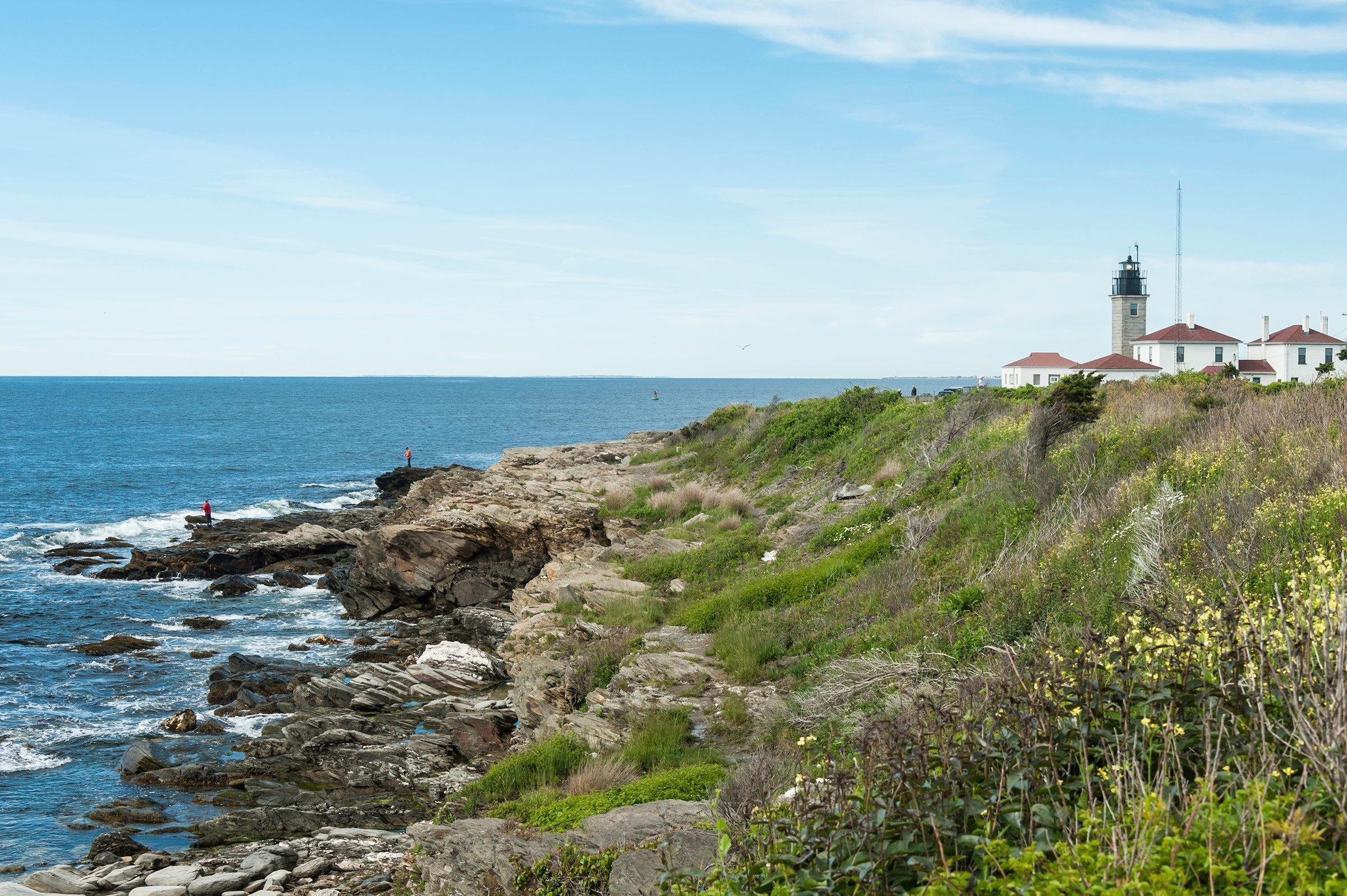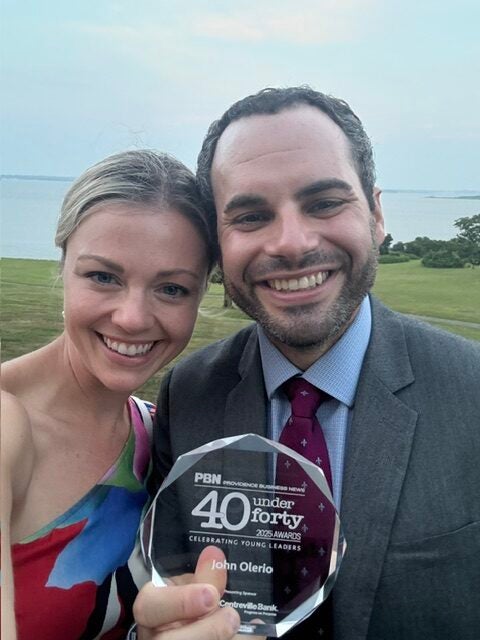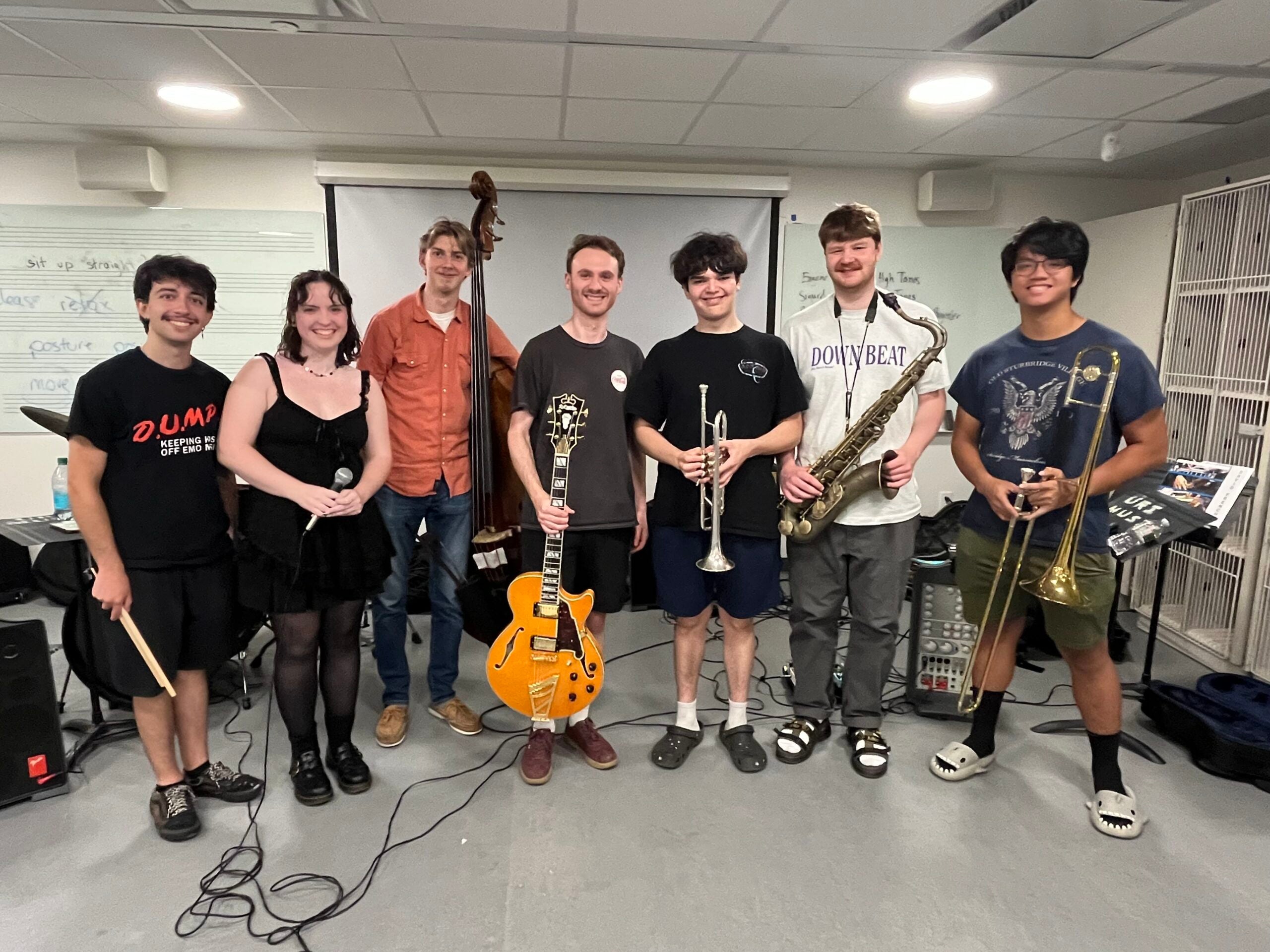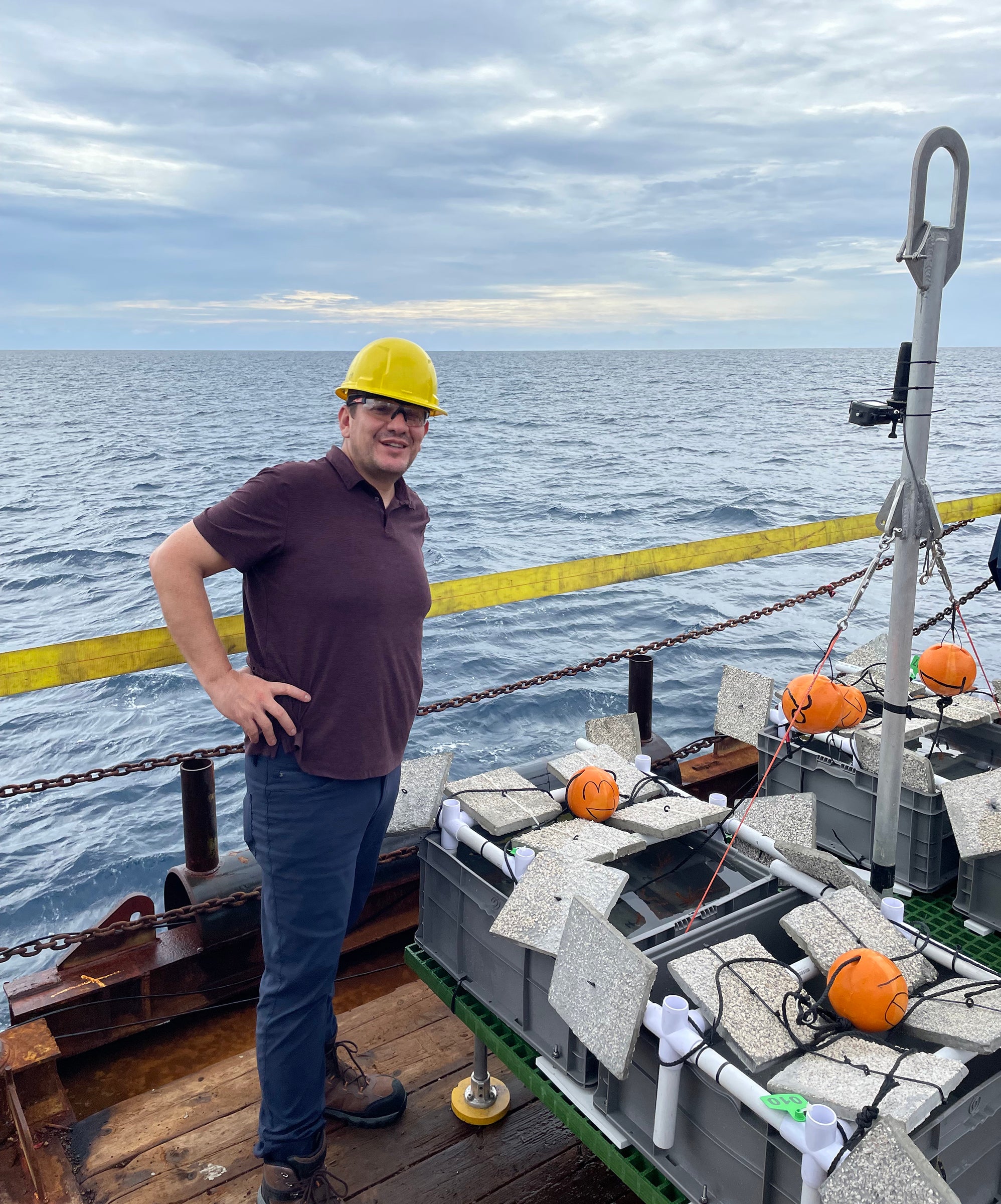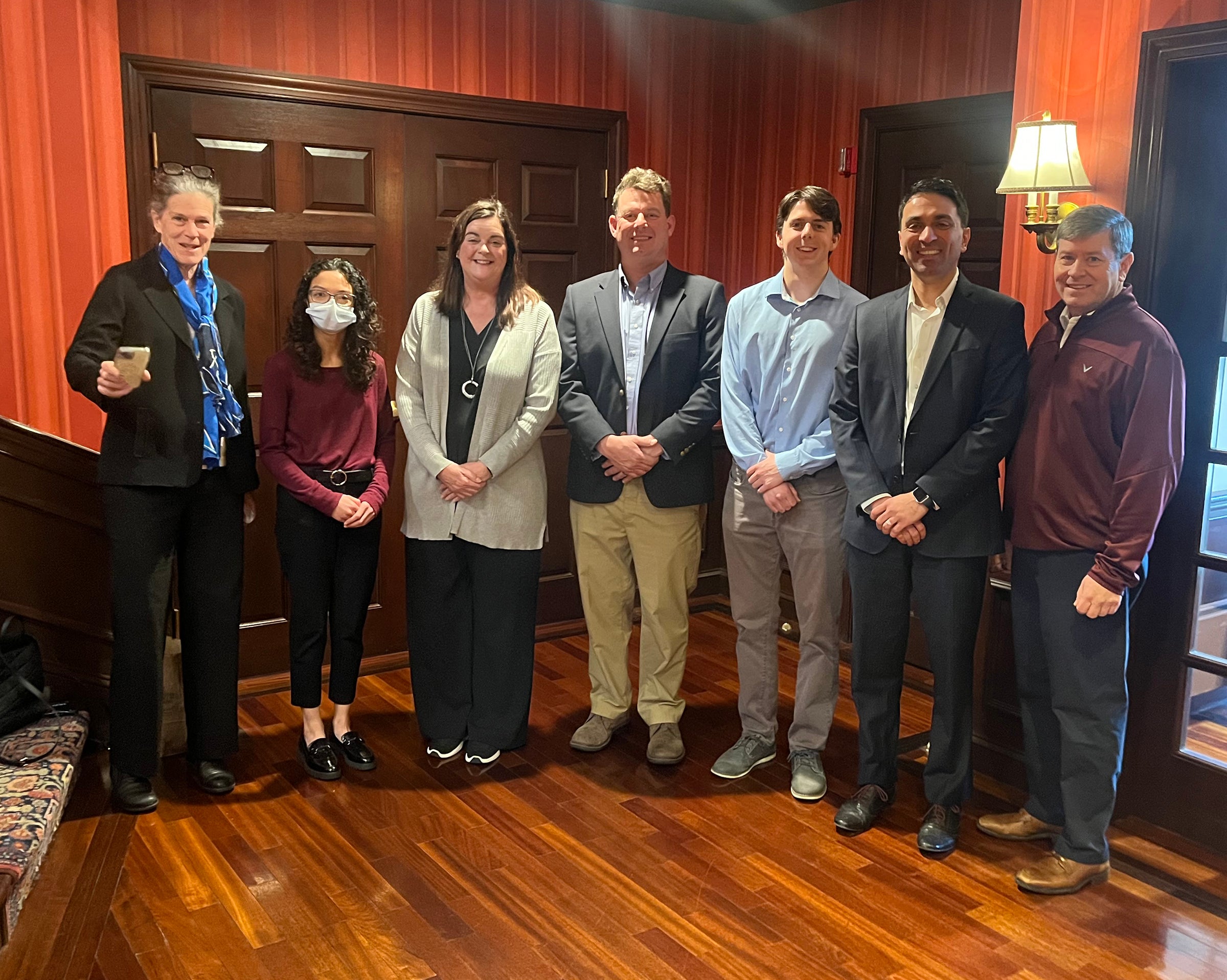Core matters: URI geoscientist weighs in on critical minerals
KINGSTON, R.I. – July 31, 2025 – Critical minerals are a hot topic in the news these days, whether as a point of contention between countries or in discussions of supply and demand. Critical minerals are nonfuel minerals/metals necessary to industry and are essential in a wide range of technologies. Their availability is sensitive to swings in the global marketplace: the problem of where to obtain critical minerals touches everything from electrical steel and graphite needs to manufacturing with lithium, aluminum, rare earth elements, and more. The United States does not have all the “critical minerals” that it needs, especially looking ahead several decades.

With a topic of such vital interest, one University of Rhode Island geosciences professor is already teaching students in her classes about vital minerals and materials to help them better understand discussions in the news.
“In all of our classes in the Geosciences Department,” Dawn Cardace (of North Kingstown) says, “we make an effort to connect Earth science and the human experience so students can better understand what it means to exist on our planet and how our lives are impacted by industrial trends and the choices we make about uses of Earth materials.”
With extensive work conducting astrobiological research for NASA on the habitability of extraterrestrial planetary environments, Cardace also wants to see discussion of Earth science closer to home. Earth science affects all of us, she says, right underneath our feet. Hoping to build more interest in geosciences for URI students and also support increased expertise in the field, Cardace has worked with students transferring from the Community College of Rhode Island and made presentations at area schools, local libraries, state parks, and land trusts on Rhode Island’s unique geology.

She hopes to see more students consider the field and embrace geosciences as a crucial double-major in our time, creating their own programs that complement other areas of study at URI.
“This program prepares students for a number of fields and post-college steps,” Cardace says. “Students can double major in geosciences with anything else: business, economics, history. The major prepares students to be ready for a number of future paths, with experiences in the lab and outdoors in field environments, working with data, generating professional presentations and talks, and solving complex environmental problems.”
Cardace arrived in Earth sciences by an indirect route herself. As a teenager, she loved chemistry in high school, but was also interested in languages, history, music, and literature, and focused on those for her undergraduate studies, majoring in French literature. Her language background helped her land a job after graduation as a National Park Service ranger at Wind Cave and Carlsbad Caverns National Parks. The geology came naturally as she studied up on the topic with staff geoscientists. Over time, Cardace realized she wanted to know more about cave environments and the geologic history of caves—more than what she could deliver in programs lasting an hour or two.
“I just fell in love with it,” she recalls, describing the deep geological dive she took to better understand and explain the phenomena visitors were witnessing. With a new professional path calling to her, she hung up her ranger hat to head to graduate school to study Earth science in depth.
Now based in Rhode Island since joining URI in 2010, she has found a few favorite local places to get up close to one of her favorite topics and will happily share suggestions for a Rhode Island “geo-tour.”
Cardace recently discussed critical minerals in an interview.
How do you help students understand the debate over critical minerals?
I teach Earth science courses each semester, hoping to connect humans and society to Earth science-relevant issues in ways that students can relate to. Especially in GEO320, Earth Materials, we spend time discussing what they are seeing in the news regarding the status of critical minerals from our U.S. perspective. For many, this is eye-opening.
This past spring, students selected several different critical minerals for individualized projects and presentations. The topic resonated because students are seeing this in the news. Many had no idea before the class about the lasting debate and anticipated shortages of minerals.
These issues have been on the radar for geoscientists for a while now, with increasing urgency since the 1980s. Supported by the Energy Act of 2020, the U.S. Geological Survey started publishing a critical mineral list yearly. This is an economic problem that is not going away.
Is this a growth field in the environmental sciences in terms of job prospects?
There is a “graying” of the national workforce in this area. Young geoscientists entering the field now can do very well. It’s a good time to be a serious young geoscientist, with many careers in the field. Some of our students go into top graduate programs across the country, others into environmental consulting (largely interested in environmental remediation and smart restoration of our landscapes), water quality and water resource monitoring, other industry work/materials testing, and science literacy and science education and communication fields. We have a great student and alum community!
Geoscience work has always been a part of the infrastructure of American life and provides a basis for essentially all building/construction and environmental monitoring work. The uncertain supply of critical minerals is just now increasingly in the news, and the exciting discussions about the possible future space missions to Mars or the moon attract a lot of attention—but the general public doesn’t immediately realize that this is geoscience in action.
We welcome any student looking to explore the geology of big planetary and environmental issues being discussed in our larger culture at this time. Students often come to the major once they’re in college, taking a class and then switching in or adding a double major or minor. We welcome new students at all points of their path and would love to see more students join us in Earth sciences. We need more students to help maintain competitive knowledge about mineral matters nationally and hope to increase literacy around geology in general.
You’ve investigated rocks common to both Mars and Earth in places like California and Puerto Rico. What is the connection?
I have mentored students studying the rocks and soils in California, Puerto Rico (and western Massachusetts and Maine), which are cousins to rocks under study right now on Mars, for example. Earth and Mars are both “terrestrial planets” and close neighbors in our solar system, so the relationships are many! There are Mars analog environments we can study here on Earth. And we are doing so.
As New Englanders are getting out and about this summer, do you have any favorite places nearby you recommend to get up close to our region’s geoscience resources?
Brenton Point State Park in Newport is one; it’s peaceful and gorgeous. We bring students there to see ancient sedimentary rocks, viewable at low tide. It’s a record of a lost time. Also visit Norman Bird Sanctuary in Middletown. The rocks you see underneath you at the lookout point there are a gorgeous pile of metamorphosed conglomerate, known as puddingstone, now eroding. You can see these deep rocks, exposed through erosion at Earth’s surface now, and imagine the processes that shaped them thousands of years ago. I also recommend Beavertail State Park in Jamestown; at the base of the lighthouse, visitors can see tiny beautiful red garnets in the metamorphosed sedimentary rocks there—created out of muddy sediments from an ancient ocean floor, older than our modern Atlantic.
I still love talking about what we can see around us in parks and natural spaces. Change never stops!
To schedule an interview with Dr. Cardace, please contact the URI Department of Communications. Visit https://web.uri.edu/geo/ to learn more about Geosciences at URI.
Latest All News
- John Olerio named to Providence Business News 40 Under Forty listKINGSTON, R.I. – July 31, 2025 – University of Rhode Island Executive Director of Strategic Initiatives John Olerio M.B.A. ’11, Ph.D. ’20 has been recognized with a PBN 40 Under Forty Award by Providence Business News. The annual award recognizes individuals under the age of 40 who have excelled in their profession and are involved […]
- URI jazz students to return to Newport Jazz Festival for third yearKINGSTON, R.I. – July 31, 2025 – University of Rhode Island music students will again take the stage at the legendary Newport Jazz Festival. Playing a half-hour set that tips the hat to the festival’s vast history, the seven URI students will perform Sunday, Aug. 3, at about 2:45 p.m. on the Foundation Stage at […]
- Caribbean coral reefs’ chronic decline could get a boost from proactive assisted gene flow — if allowedKINGSTON, R.I. – July 30, 2025 – Coral reefs are under threat from warming oceans and prolonged heat — but regulatory inaction also poses a risk. However, marine biologists say that new approaches in the region could help prevent species loss and retain ecosystem function, if they get the permission to proceed. One approach that […]
- Navigating health careIf you’ve had to find a primary-care provider or pay a medical bill lately, you know that accessing and paying for health care can be difficult. But why? How can we get the care we need?
- URI Consulting Club helps Providence Mutual combat carbon emissions levelsKINGSTON, R.I. – July 29, 2025 – The University of Rhode Island continues to leave an indelible mark on its students—an influence that extends well beyond the Kingston Campus to prominent businesses such as Providence Mutual Fire Insurance Company. For Providence Mutual, that impact will be lasting, thanks to the work done by the URI […]
- URI to host RI-INBRE Summer Research Symposium Aug. 1KINGSTON, R.I. — July 29, 2025 — About 200 students from 10 institutions across Rhode Island will present more than 100 biomedical research projects they’ve spent the summer studying, as RI-INBRE hosts its 21st annual Summer Undergraduate Research Symposium on Aug. 1. The Rhode Island IDeA Network of Biomedical Research Excellence program started in 2001, […]



